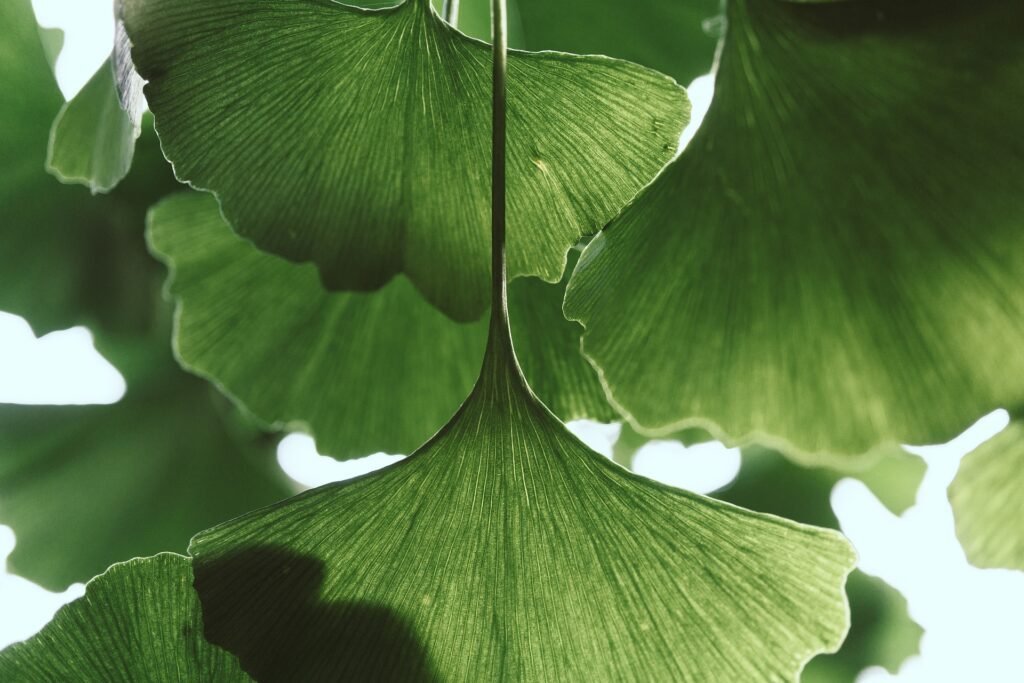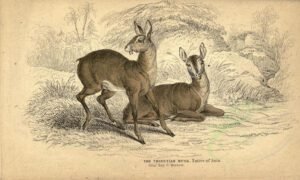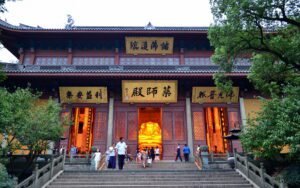Introduction
The ginkgo tree, with its unique fan-shaped leaves, stands as a testament to nature’s resilience. For centuries, this ancient tree has captivated cultures around the world. But what is the meaning of the ginkgo leaf and what makes the ginkgo leaf so special? In this article, we’ll dive deep into its rich symbolism. We’ll explore its historical roots, uncover its meanings, and discover why it continues to enchant us today.
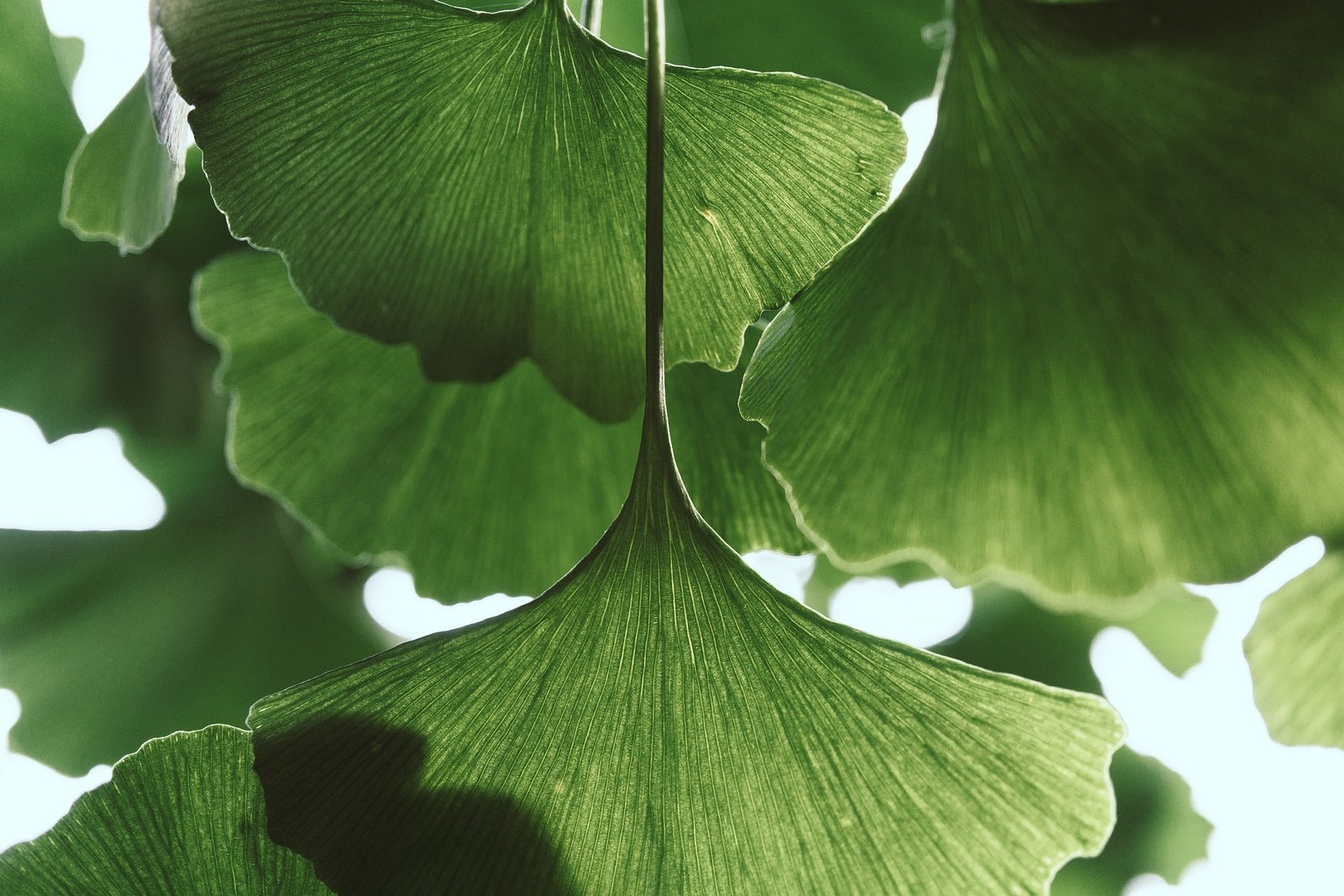
Table of Contents
Historical Background of the Ginkgo Tree
The ginkgo tree, often referred to as a “living fossil,” boasts a lineage that stretches back over 270 million years. Its story is one of endurance, adaptability, and cultural reverence.
“The ginkgo tree is from the era of dinosaurs, but while the dinosaur has been extinguished, the modern ginkgo has not changed. After the atomic bomb in Hiroshima, the ginkgo was the first tree that came up. It’s amazing.” – Koji Nakanishi
Origin and Evolution
Originating from the ancient terrains of China, the ginkgo tree has observed the passage of countless eras. In contrast to numerous species that have either adapted or vanished over time, the ginkgo has maintained an astonishing stability in its genetic structure. Characterized by its unique fan-shaped foliage, this resilient tree has endured ice ages, significant geological transformations, and the dominance of dinosaurs. In the present day, it serves as a symbol of nature’s resilience and the enduring influence of evolutionary processes.
Cultural Significance in Ancient Civilizations
In ancient China, the ginkgo tree transcended its role as a mere plant to become a profound symbol of longevity and aesthetic appeal. It was integrated into traditional medicine, religious rituals, and the gardens of royalty, reflecting its esteemed status. The ginkgo frequently appeared in ancient literature and art, including poetry and paintings, where it was celebrated as a connection between the mortal realm and the divine.
In Japan, the ginkgo tree attained a revered status, particularly within Buddhist temples, where it was commonly planted as a safeguard against fire and malevolent spirits. Its remarkable resilience, particularly its capacity to regenerate following calamities, positioned the ginkgo as an emblem of hope, renewal, and the concept of eternal life.
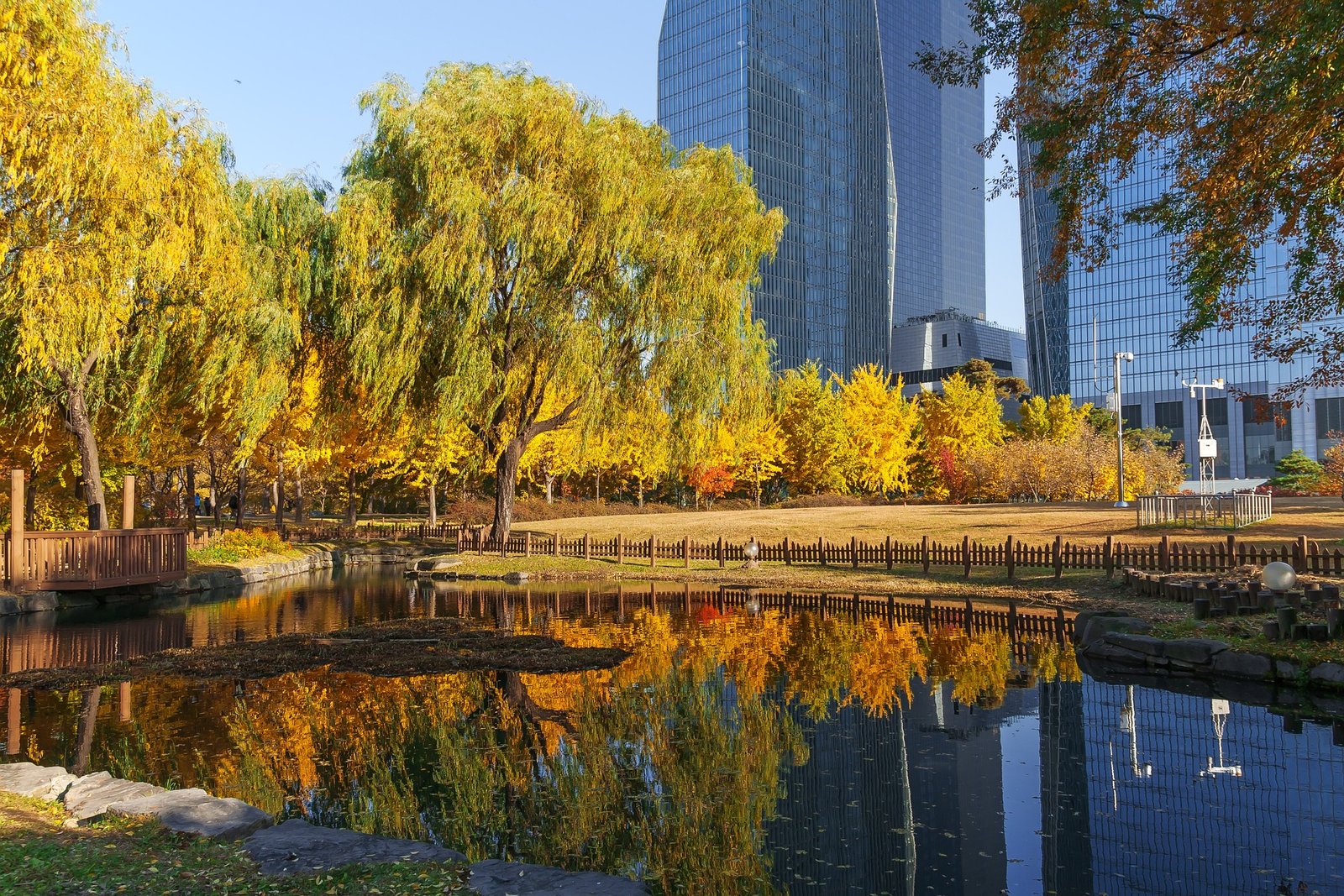
The Ginkgo Leaf: More Than Just a Leaf
When we gaze upon the ginkgo leaf, we’re not just looking at a piece of nature; we’re connecting with a symbol steeped in history, meaning, and cultural significance. Its unique shape and transformative colors have inspired countless generations.
“In the ginkgo’s leaves, we find the essence of endurance, hope, and timelessness. It’s not just a tree; it’s a living testament to Earth’s grand narrative.” – Anonymous
Physical Characteristics
The ginkgo leaf stands out, and for good reason. Its fan shape, reminiscent of a butterfly’s wings, is unlike any other tree leaf. This distinctive form, with its radiating veins, captures the essence of nature’s intricate design. As seasons change, so does the ginkgo leaf. From the fresh green of spring to the golden hue of autumn, its colors tell a story of time’s passage.
Symbolism in Various Cultures
In Chinese culture, the ginkgo leaf symbolizes longevity and resilience. It’s not just about the tree’s ability to live for thousands of years, but also its capacity to thrive in challenging environments. The leaf represents a promise: that life, despite its hardships, endures.
Over in Japan, the ginkgo leaf takes on a slightly different meaning. Here, it embodies hope and the duality of life. The two lobes of the leaf represent life’s opposing forces: joy and sorrow, life and death, yin and yang. It’s a reminder of the balance that exists in the world.
In the West, the ginkgo leaf has become a symbol of peace, especially after some ginkgo trees survived the atomic bombing in Hiroshima. Their ability to sprout anew after such devastation has made them a beacon of hope and renewal.
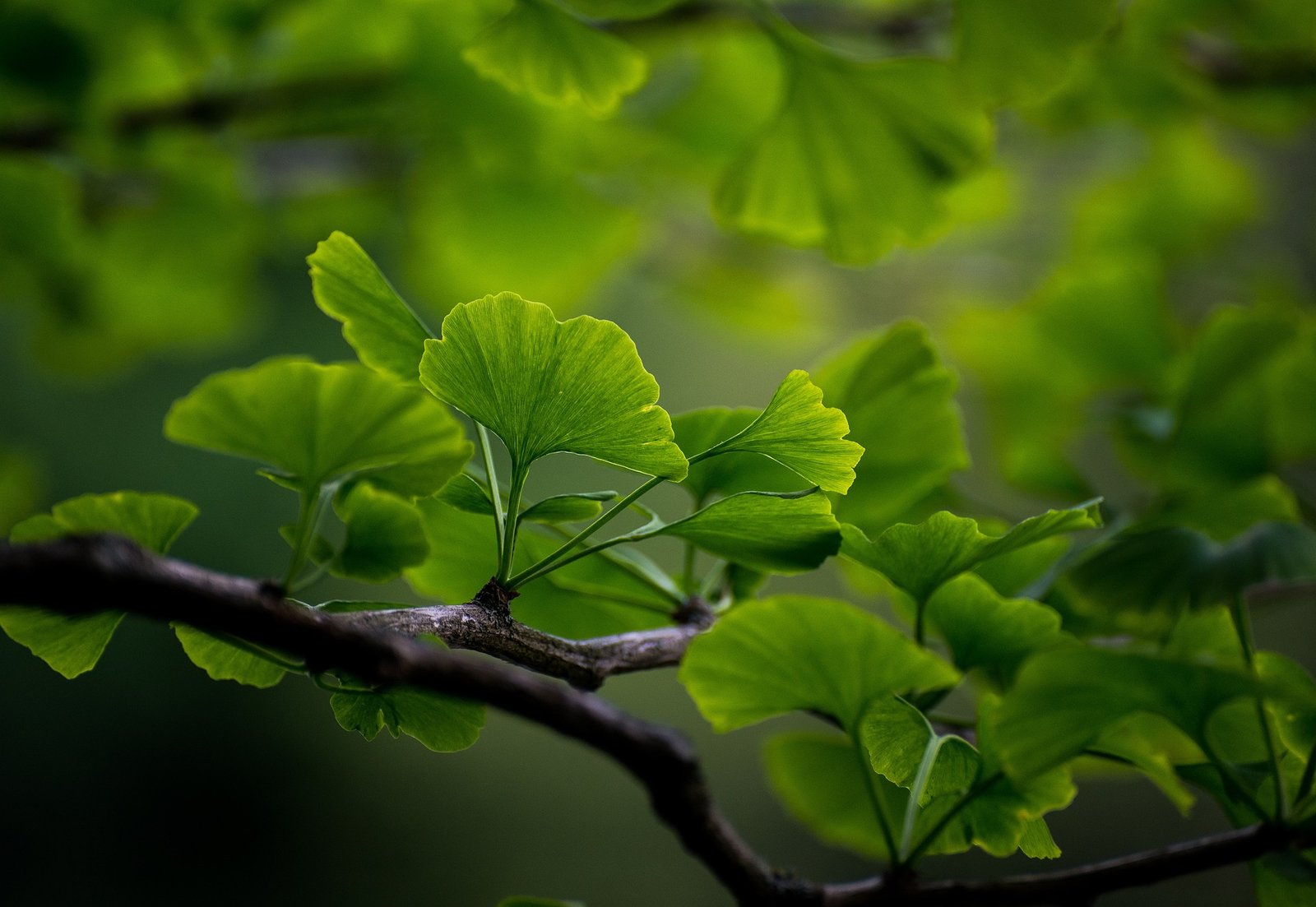
Ginkgo Leaf in Modern Times
While the ginkgo tree’s roots lie deep in ancient history, its leaves continue to flutter in the winds of modernity. Today, the ginkgo leaf is not just an emblem of the past but a beacon for the future, finding relevance in medicine, art, and urban landscapes.
Modern Medicine and Health Benefits
The ginkgo leaf doesn’t just rest on the laurels of its symbolic significance; it actively contributes to modern medicine. Traditional Chinese medicine has long recognized the ginkgo leaf’s potential, using it to treat various ailments. Today, science backs many of these claims.
Research has unveiled the ginkgo biloba extract’s potential benefits. From enhancing memory to improving blood circulation, the compounds in these leaves are making waves in the medical community. One of the most notable findings is its potential role in supporting cognitive functions. As the world grapples with an aging population, the ginkgo leaf offers a glimmer of hope for age-related ailments.
The Ginkgo Leaf in Art and Design
Beyond the realm of medicine, the ginkgo leaf has etched its mark on modern art and design. Its unique shape and symbolic weight make it a favorite among artists and designers. Whether it’s a delicate piece of jewelry, a vibrant tattoo, or a contemporary painting, the ginkgo leaf finds its way into various forms of artistic expression. It serves as a bridge, connecting the ancient with the contemporary, the East with the West.

Spiritual and Philosophical Interpretations
The ginkgo leaf, with its delicate veins and unique silhouette, is more than just nature’s artwork. It’s a canvas upon which countless spiritual and philosophical teachings have been painted. Its presence in religious sites and ancient scriptures speaks volumes about its profound significance.
The Ginkgo Leaf and Buddhism
Buddhist temples often resonate with the rustling sounds of ginkgo leaves. These trees, standing tall and serene, have found a sacred space within temple grounds. But why? The ginkgo tree’s resilience, especially its uncanny ability to regenerate after calamities, aligns with Buddhist teachings of rebirth and renewal.
Moreover, the ginkgo leaf’s bifurcated design is reminiscent of life’s dualities. In Buddhism, understanding and accepting these dualities—life and death, joy and suffering, attachment and detachment—are pivotal. The ginkgo leaf, in its silent wisdom, embodies these teachings.
Lessons from the Ginkgo Leaf
Life is a dance of contrasts, and the ginkgo leaf is a testament to that. Its existence, spanning millions of years, has seen the world change, evolve, and transform. Yet, the leaf remains true to its essence. It teaches us the importance of staying rooted while embracing change.
The duality of its design also offers a lesson in balance. Just as the leaf balances its two lobes, we must balance the myriad contrasts of life. It’s a call to find harmony amidst chaos, to seek peace amidst turmoil, and to discover light amidst darkness.

Practical Uses and Applications
The ginkgo leaf, while steeped in symbolism and history, is not just a relic of the past. Its practical applications in today’s world are vast and varied. From culinary delights to urban greenery, the ginkgo tree and its leaves have seamlessly integrated into our modern lives.
Culinary Uses
The ginkgo tree offers more than just visual and symbolic appeal; it brings flavors to our plates. The ginkgo nut, encased within its fruit, is a culinary treasure in many Asian cuisines. Often roasted or boiled, these nuts add a subtle taste and texture to dishes, especially in celebratory meals and traditional feasts.
However, while the ginkgo nut is a delicacy, caution is paramount. Consumed in large quantities, it can have adverse effects. It’s a reminder that while nature offers bounty, it demands respect.
Landscaping and Urban Planning
Step into any modern city, and amidst the concrete jungles, you might find the serene presence of ginkgo trees. Their resilience makes them perfect for urban landscapes. They stand undeterred by pollution, demanding minimal maintenance and offering maximum beauty.
But it’s not just about aesthetics. Ginkgo trees play a pivotal role in improving air quality. Their leaves absorb pollutants, making city air cleaner and more breathable. Moreover, their shade provides respite from urban heat, making them invaluable assets in city planning.
Conservation and Environmental Impact
The ginkgo tree, an emblem of endurance and timelessness, is not just a passive observer of Earth’s history. It actively contributes to our planet’s well-being. As we grapple with environmental challenges, the ginkgo tree stands as a beacon of hope, showcasing the symbiotic relationship between nature and humanity.
The Ginkgo’s Role in Biodiversity
Labeling the ginkgo tree as a “living fossil” isn’t mere poetic license; it’s a nod to its unparalleled genetic lineage. This tree has remained genetically consistent for over 270 million years, offering a rich tapestry of biodiversity. Its existence provides scientists with invaluable insights into evolutionary processes and the mysteries of plant genetics.
But beyond the realm of science, the ginkgo tree plays a crucial role in maintaining ecological balance. Its unique genetic makeup adds to our planet’s biodiversity, ensuring a richer, more varied, and resilient ecosystem.
Environmental Benefits
In an age where urbanization and industrialization often overshadow nature, the ginkgo tree emerges as an environmental savior. Its expansive canopy and dense foliage act as natural air purifiers, absorbing a plethora of pollutants and replenishing the atmosphere with fresh oxygen.
Furthermore, ginkgo trees play a pivotal role in urban heat reduction. Their shade provides cooling, mitigating the heat island effect prevalent in many modern cities. This not only enhances urban livability but also reduces energy consumption, as cooler environments diminish the need for artificial cooling.
Conclusion
The journey through the world of the ginkgo leaf has been nothing short of enlightening. From ancient temples to bustling modern streets, this iconic leaf has woven its tale across time and cultures.
Recap of the Multifaceted Meanings and Significance
The ginkgo leaf is not just a testament to nature’s artistry; it’s a symbol laden with profound meaning. Its fan-shaped design speaks of duality, balance, and harmony. Cultures across the world have revered it, finding in its delicate veins stories of resilience, hope, and renewal. In modern times, its contributions extend beyond symbolism. It finds relevance in medicine, art, and even urban planning, showcasing its multifaceted significance.
“Nature always wears the colors of the spirit, and the ginkgo’s golden hue is a radiant reflection of life’s eternal dance.” – Ralph Waldo Emerson
Encouraging Appreciation
As we stand at the crossroads of tradition and modernity, the ginkgo leaf serves as a gentle reminder. It urges us to pause, reflect, and appreciate the beauty and lessons it offers. In its silent whispers, we find age-old wisdom, urging us to forge connections, understand our roots, and embrace the future with hope.
Sources:
Advances in the Studies of Ginkgo Biloba Leaves Extract on Aging-Related Diseases


